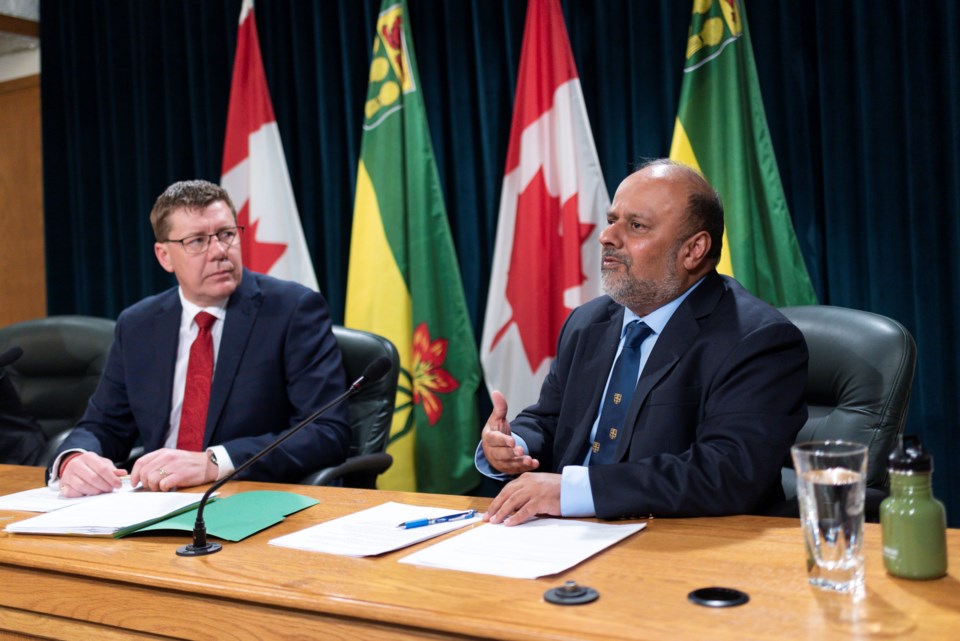Saskatchewan has reported the first appearance of the COVID-19 variant strain originating in Brazil, which has public health officials expressing concerns about containing variant spread as much as possible.
Five cases of the P1 strain were reported in the southwest region in the daily case numbers on April 20, the first appearance of the variant in the province.
Chief medical health officer Dr. Saqib Shahab said during a press conference that the variant cases have not been linked to a recent mass spreader event in Maple Creek, but they do pose a serious concern for public health officials.
“At this point, we don’t have any linkage to mass transmission events and not having that linkage isn’t surprising,” said Shahab. “We also know that once we have a variant of concern in the continent or country like Canada, it is to some extent inevitable that it will increase anywhere in Canada.”
There is not as much known about the P1 strain in comparison to the B117 variant from the United Kingdom, said Shahab. The B117 variant has shown to be anywhere from 60 to 100 per cent more transmissible than the original strain, which has public health focused on learning more about the Brazilian variant.
“With the P1 variant, we are learning more about possibly increased transmissibility. We are still learning about is it more severe or not, and we are still learning about how effective the vaccine is,” said Shahab. “Until such time that our vaccination rates are up as high as we can get, 70 or 80 per cent for all people 18 and older, it's going to be so important for us to abide by all public health orders.”
The majority of COVID-19 variant cases that have been reported in the province have been in the southern part of Saskatchewan so far, said Shahab, and have been identified as the B117 variant.
A South African variant was also previously reported in the province, titled B1351, but was contained during the contact tracing investigation and has not been widely spread. The new P1 cases are undergoing contact tracing now, with extensive and broad testing and potentially extended isolation periods if the variant shows to be in a household contact situation.
In the larger provincial picture, public health is also now focused on slowing overall transmission rates in order to avoid any of the three variants seen in Saskatchewan from spreading even further.
“We have to do everything we can to keep COVID cases as low as possible, in respect to what strain they are, but also we want to delay the introduction and wide dispersal of all variants,” said Shahab.
Public health orders restricting household contact have been extended until May 10, and vaccination eligibility is set to be opened as far as age 40 and older by mid-next week, to slow transmission. In the meantime, Shahab asked residents to take more caution when out and about in the coming weeks to help flatten the curve.
The rise in variant case numbers also has Premier Scott Moe saying it is “premature” for the province to move toward a “return to normal” at this time, and instead the focus is on creating herd immunity through vaccination to better protect the public.




